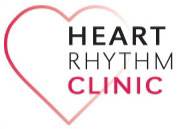HEART RHYTHM CLINIC
Looking after your heartHOME | ABOUT US | THE TEAM | TREATMENTS & PROCEDURES | COST | APPOINTMENTS | CONTACT US
Pacemakers
Pacemaker as treatment for bradycardia
A pacemaker is used to treat heart rhythms that can cause your heart to beat too slowly or miss beats (bradycardia). Bradycardia is a term that describes a number of different conditions in which the heart beats at an unusually slow rate. If impulses are sent from the sinoatrial node (SA node) at a slow rate, or if the impulses are delayed as they travel through the conduction system, the end result is a slower heartbeat or pulse. Sinus bradycardia is an unusually slow heartbeat due to normal causes and commonly occurs in athletes or during a state of deep relaxation.
However, bradycardia may also be caused by age–related deterioration of the heart’s electrical conduction system, coronary heart disease or by medications prescribed to treat arrhythmias or high blood pressure. Once these medications have been reduced or discontinued, the bradycardia will usually resolve on its own.
Causes, signs and symptoms of bradycardia
Some types of bradycardia produce no symptoms, and others may cause dizziness, weakness or fainting (syncope).
- Sick sinus syndrome occurs when the heart’s natural pacemaker, the SA node, fails causing an irregular heartbeat. Patients with sick sinus syndrome may experience a slow heartbeat (bradycardia), a fast heartbeat (tachycardia) or heartbeats that swap between fast and slow (brady–tachy syndrome or tachy–brady syndrome). Patients may experience dizziness, tiredness, weakness or fainting (syncope). Although, it is more common in elderly people it can occur in children, often after cardiac surgery.
- Heart block (atrioventricular block or AV block) occurs when electrical impulses are slowed or blocked as they travel from the atria through the AV node into the ventricles.
The symptoms and treatments for heart block depend on its severity, the different types of heart block and the treatment options available are explained below.
- First–degree heart block occurs when the electrical impulses slow as they pass through the AV node. However all impulses reach the ventricles. First–degree heart block rarely causes any symptoms, and is often found in athletes. No treatments are generally necessary.
- Type I second–degree heart block occurs when the electrical impulses are delayed to a greater extent with each heartbeat until a beat is skipped entirely and the cycle then repeats itself. This may cause dizziness and other symptoms. In such cases, a pacemaker may be required.
- Type II second–degree heart block occurs when some of the electrical impulses from the SA node are unable to reach the ventricles, for example every third or fourth impulse. This is usually because of an underlying disease. A pacemaker may be required to control and regulate the heart rhythm.
- Third–degree heart block (complete heart block) occurs when no electrical impulses reach the ventricles. This is usually as a result of underlying disease or medications. In the absence of any electrical impulses from the atria, the ventricles produce impulses on their own; these are called ventricular escape beats. However, these heartbeats are usually slow and the patient may feel very unwell. Sometimes the patient remains relatively well and a pacemaker can be implanted after a few days. Occasionally, this condition needs to be treated more quickly and if a pacemaker cannot be implanted immediately, the doctors will put a temporary pacemaker wire into the heart to keep the heart pumping regularly until the permanent pacemaker system is implanted.
Pacemaker implantation
• soreness
• raised appearance • discharge
• raised temperature
• sudden severe pain at the wound site
You should restrict your arm movements on the side of the body that the device is implanted until your rst follow-up appointment. This will allow the lead(s) time to settle in to your heart muscle. Avoid motions that stretch the chest muscles on the side of your pacemaker.
Do not:
• lift heavy objects (nothing heavier than a full kettle of water, for example) • lift your arm above shoulder height
• stretch your arm back behind your body
• use strenuous pushing or pulling motions
It is important to still use your arm for light activities to maintain movement in your shoulder joint.
Your first appointment with the cardiac rhythm management team will be in around six weeks. At this appointment your pacemaker will be checked and we will review your wound site.
You will also have the opportunity to ask us any questions that you might have. If you are a resident of the Channel Islands you will receive a letter instructing you to send information to us using your home monitor.
 TREATMENTS & PROCEDURES:
TREATMENTS & PROCEDURES:
THE TEAM
Our specialist doctors are here to guide you through every part of your procedure
TREATMENTS & PROCEDURES
Learn more about the treatment or procedure you are about to have
FREQUENTLY ASKED QUESTIONS
Without a doubt you will have questions, check out this handy resource
CONTACT US
Heart Rhythm Clinic is based at Spire Southampton Hospital but also consults in Lymington, Sarum Road (Winchester) and the Nuffield Hospital, Southampton.
